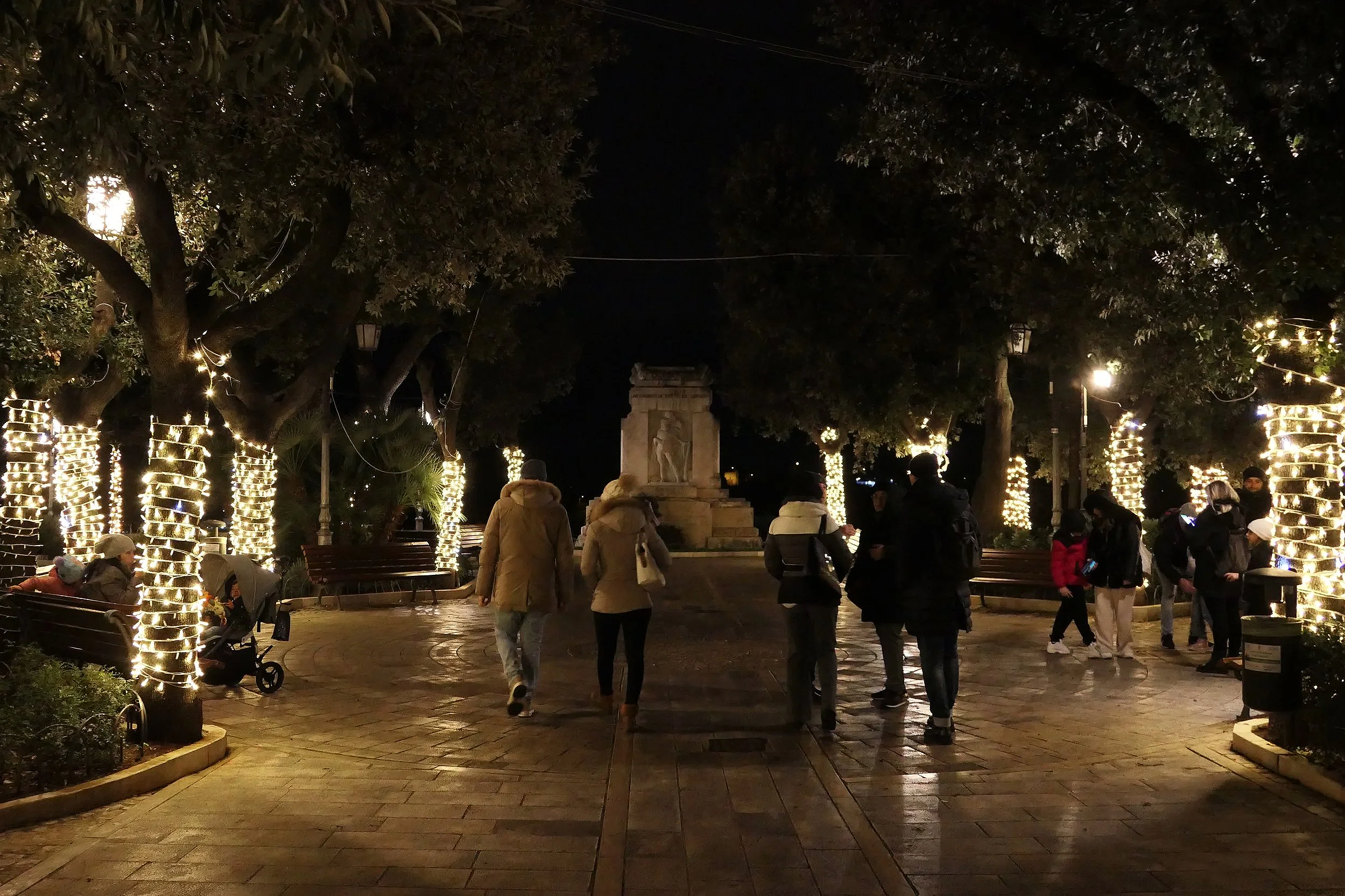A Christmas Passeggiata
Valle d'Itria from Locorotondo: In the rocky Valle d’Itria, dry stone fences divide fields from olive groves, and olive groves from vineyards; and they also define the farmsteads whose conical stone houses, built according to an ancient tradition, are called trulli. The views of the valley from Locorotondo’s Punto Panoramico seem almost too perfect.
Sometime before the 11th century AD, people from the Valle d’Itria began to settle on a rounded hilltop in Puglia, overlooking the valley. After all, who can resist property with a view? Gradually, little whitewashed houses, with steeply pitched roofs, began to be strung along lanes that circled the hill’s contours, like icing atop a Christmas pudding. In time a church was built, and a Benedictine monastery. An old document from the reign of Holy Roman Emperor Henry VI refers to the town as a Locus Rotundus – a “Round Place” – and the name stuck, sort of … in Italian, it became Locorotondo.
Down in the valley, fields, vineyards, and olive groves surround traditional, conical farm buildings called trulli. The white houses in the village are very different from the trulli, and are called cummerse – though the roofs of both are made of chiancarelle, the plentiful local limestone.
In the 16th century, and then again in the 19th, the original church, dedicated to St. George the Martyr, was enlarged. St. George is the town’s patron saint – one of them, anyway. (There’s another church dedicated to San Rocco, who apparently helped the village survive a plague in the 18th century.)
Perhaps you’ve heard of Ostuni, the celebrated “White City” of Puglia, with its gleaming hilltop presence. Locorotondo, though much smaller, can at least be called the “White Village” of Puglia, for the same reason. With its narrow streets, picturesque facades, and flowered balconies encircling St. George’s church in the Old Town, and with sweeping views of the Valle d’Itria from the Punto Panoramico and Via Nardelli, it’s no wonder that Locorotondo has been named one of the Borghi piu Belli d’Italia – “Most Beautiful Small Towns in Italy.”
And then there is La Favola di Natale a Locorotondo. The “Christmas Fairytale” in Locorotondo is a continuing series of holiday festivities that begin in November and last through January. I can’t begin to list them all, but in nearby Alberobello, where the townfolk are justly proud of their own Christmas traditions, we were told that we must spend at least one evening in Locorotondo to join throngs of villagers and visitors in one of the most joyful, and human-scale, of Yuletide passeggiate. And so we did:
Relaxing before the Main Event: Waiting for sunset at a café in Piazza Dante, in front of the little rectory church, Chiesetta Rettoria Madonna Addolorata.
Via Morelli has donned its finery, and waits impatiently for the evening festivities.
Via Morelli after dark: A cheerful crowd celebrates beneath the street’s gleaming ornaments and sparkling lights.
This lane was so thickly bedecked with holiday greenery and crimson bows that we never found its name …
But later, in the dark, it was still easy to recognize the exuberant trimmings of this happy vicolo.
A homespun Santa on Saxophone, in a barrel-vaulted passageway, warming up for the evening show.
The festive lights have just been switched on at the Mandragora Winebar. Mandragora is another name for the legendary magical Mandrake plant – hallucinogen, aphrodisiac, anaesthetic, and poison. I opted for a glass of Bianco di Locorotondo DOC, the local white wine instead. Wouldn’t harm a fly.
After dusk, the air grows chill. The tables in the piazza empty. In the glow of Mandragora’s Christmas decorations, people begin to move.
Visitors stream through Porta Napoli into Piazza Vittorio Emanuele. Beyond the arch is the Area Pedonale and the Centro Storico – the Old Town. The streets enclosing Locorotondo’s historic centre live up to town’s name: they make an almost perfect circle around a maze of narrow alleys.
Many celebrants fortify themselves at the Caffè della Villa in Piazza Vittorio Emanuele before venturing further on the passeggiata.
Crowds choke this narrow street, under garlands of evergreen boughs and between grapevines heavy with clustered lights.
These walkers find some room as they approach a house with the tall, narrow façade and pointed roof typical of Locorotondo’s cummerse houses.
Late Night on Via Nardelli, just outside the Pedestrian Zone and the Old Town. Parked cars reflect the holiday lights, as – perhaps a bit footsore – visitors wend their way home.
Perhaps these people are also going home, but have strayed into Locorotondo’s lovely Punto Panoramico park. Beyond the monument to the town’s fallen in wars, are the scattered lights on the vast, dark valley floor: farmsteads, villages, roadways, and the glow from the baroque city of Martina Franca, five miles away.
Text © 2024 by Joe Gartman; Photographs © 2024 by Patricia Gartman. First published in Italia! Magazine, December/January 2025














